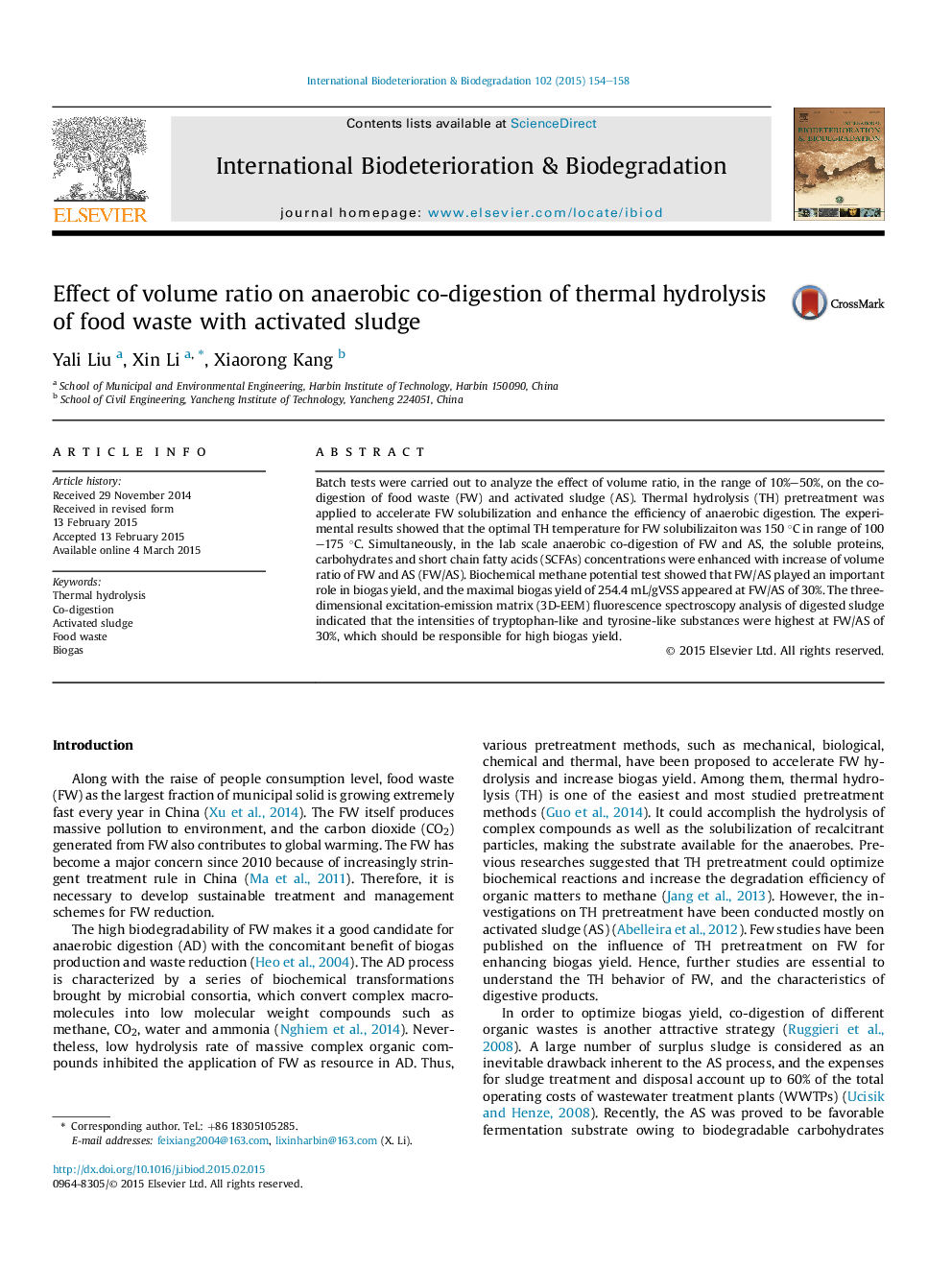| Article ID | Journal | Published Year | Pages | File Type |
|---|---|---|---|---|
| 4364363 | International Biodeterioration & Biodegradation | 2015 | 5 Pages |
•Thermal hydrolysis was used to enhance food waste solubilization.•Co-digestion of food waste and activated sludge at different volume ratios were discussed.•Maximal biogas of 254.4 mL/gVSS produced at volume ratio of 30%.•EPS characteristics of co-digestion sludge were analyzed by 3D-EEM for explaining biogas enhancement.
Batch tests were carried out to analyze the effect of volume ratio, in the range of 10%–50%, on the co-digestion of food waste (FW) and activated sludge (AS). Thermal hydrolysis (TH) pretreatment was applied to accelerate FW solubilization and enhance the efficiency of anaerobic digestion. The experimental results showed that the optimal TH temperature for FW solubilizaiton was 150 °C in range of 100–175 °C. Simultaneously, in the lab scale anaerobic co-digestion of FW and AS, the soluble proteins, carbohydrates and short chain fatty acids (SCFAs) concentrations were enhanced with increase of volume ratio of FW and AS (FW/AS). Biochemical methane potential test showed that FW/AS played an important role in biogas yield, and the maximal biogas yield of 254.4 mL/gVSS appeared at FW/AS of 30%. The three-dimensional excitation-emission matrix (3D-EEM) fluorescence spectroscopy analysis of digested sludge indicated that the intensities of tryptophan-like and tyrosine-like substances were highest at FW/AS of 30%, which should be responsible for high biogas yield.
